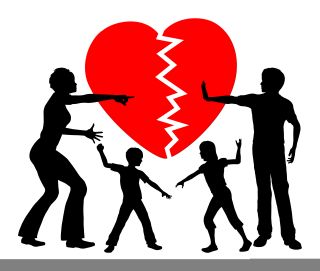Parental Alienation
Principles for Treating Parental Alienation and Estrangement
If a child resists contact with a parent in divorce, what’s the best treatment?
Updated June 20, 2023 Reviewed by Jessica Schrader
Key points
- Treatment failures are common in parental alienation and realistic estrangement because of misunderstandings.
- Treatment for alienation involves stopping alienating behaviors and regaining prior positive relationships.
- Treatment for estrangement involves eliminating abuse and building totally new positive behaviors.
When a child resists or refuses contact with a parent in a separation or divorce, it can be very confusing and often generates a lot of anger and blame among parents, grandparents, and professionals. (See my post “Resist/Refuse Dynamics: How Can They be Analyzed?”) Traditionally, the focus has been one of “who to blame,” rather than focusing on specific behaviors and how to change them. Understanding the source of the problem—essentially the diagnosis—is necessary to apply the appropriate treatment. This post addresses some of the general principles that are or should be considered in these cases today for appropriate treatment. First, an accurate assessment of resist/refuse dynamics must be made. As experts have stated: “It would be contraindicated to put an abused child in an alienation-specific treatment or an alienated child in an abuse-specific treatment.”1

Treatments for Parental Alienation
In mild and moderate cases: The child may still have some contact or recently had contact with the rejected parent. Family counseling is recommended that includes both the rejected parent and child and the favored parent and child. This way, the favored parent can work on reducing and eliminating alienating behaviors directly in interactions with the child, and give the child permission to have a positive relationship again with the rejected parent. The rejected parent can work directly with the child on their own future behaviors with each other and build on their past positive relationship. It helps to focus on future behavior rather than the past, to minimize triggering defensiveness and blame, which discourages behavior change.
In severe cases: When the child has had no contact and expresses intense anger at the parent (for no good reason), it is becoming more common to recommend a period of intense activity with the rejected parent (such as a four-day weekend of shared activities) and no contact with the favored parent (such as 60 or 90 days) who has clearly engaged in alienating behaviors.2
However, as much as possible, the favored parent should be engaged in counseling to reduce and eliminate alienating behaviors, followed by family counseling that includes each parent with the child. In extreme cases, this may not be appropriate as the alienating behaviors may be too embedded in the parent’s personality.3
Individual therapy not recommended: From my experience as a therapist and lawyer, individual therapy for the child or children in alienation cases fails 99% of the time. This is because the child has absorbed the favored parent’s alienating behaviors rather than originating with the child.
Reunification therapy with child and rejected parent only: In alienation cases, the rejected parent has contributed few, if any, alienating behaviors. Therefore, nothing changes in therapy with the child and the rejected parent only. The source of the alienating behaviors (the favored parent) must be involved.
Treatments for Estrangement
Realistic estrangement occurs when it is reasonable for a child to resist contact with a parent because of that parent’s own behavior.4
In cases of domestic violence: If there has been domestic violence in the family, the child will certainly know about it. Research shows that domestic violence by a parent against the other parent (also known as intimate partner violence) is a form of child abuse.4 The child learns to fear the violence himself or herself and may also learn to be violent in future relationships. Therefore, treatment should first involve a group therapy program for the perpetrator of the violence. The most effective programs are 52-week groups with weekly meetings. Then, family therapy with the child and each parent can build on the new behaviors learned from the group treatment. The formerly abusive parent can teach the child what he (or she) has learned. The nonviolent parent can reinforce positive behaviors and reassure the child.
In cases of child abuse: Physical child abuse is one of the easier parenting behaviors to treat. A parenting class or program may teach appropriate parenting behaviors in a matter of a few weeks. Child sexual abuse is much more complicated and may always require supervised contact or no contact depending on the nature of the abuse.
In cases of extreme emotions: Some children resist or refuse contact with a parent because the parent’s emotions—such as anxiety about the other parent—are so intense that the child cannot handle them. In such cases, the parent needs to go through a program of individual counseling or group counseling to learn to moderate their emotions to a tolerable level.
In cases of no attachment relationship: If a parent has been uninvolved for years or always was emotionally unavailable, the child may never have developed an “attachment” to that parent. There is no attachment bond to return to, so that one needs to be developed to the extent possible through step-by-step counseling and activities.
In extreme cases: In some cases of domestic violence, child abuse, or extreme emotions, these behaviors may be so embedded in a parent’s personality that only supervised contact or no contact may be appropriate to protect the child.5
Treatment Programs
New Ways for Families® is a skills training method developed by the author and High Conflict Institute to assist in overcoming alienation and abuse by teaching four big skills to parents and their children: managed emotions, flexible thinking, moderate behavior, and checking yourself. This approach can help in mild and moderate alienation cases and in abuse cases, as an adjunct to treatment programs and counseling. It has been used in a dozen family court systems, as well as in agencies and individual counseling offices. Several other organizations have designed treatments for alienation (mild/moderate and severe) and abuse (domestic violence treatment groups and other counseling).
Conclusion
These are general principles of treatment that should be considered when requesting or making decisions regarding treatment for a child who resists or refuses contact with a parent. However, it is essential that there is an accurate understanding of the cause of the child’s behavior first, as the treatments for parental alienation and for realistic estrangement are different.
To find a therapist, please visit the Psychology Today Therapy Directory.
References
1. Lorandos, D. and Bernet, W. Parental Alienation: Science and Law. Springfield, IL: Charles C. Thomas, Publisher, 2020, 213.
2. Harman, J., Saunders, L., and Afifi, T. “Evaluation of the Turning Points for Families (TPFF) program for severely alienated children,” Journal of Family Therapy, 2022, 44: 279-298.
3. Drozd, L., Saini, M., and Olesen, N. “Chapter 13: Empirical Studies of Alienation,” Parenting Plan Evaluations, 2nd Ed.: Applied Research for the Family Court. New York: Oxford University Press, 2016, 375.
4. Xyrakis, N., Aquilina, B., McNiece, E., Tran, T., Waddell, C., Suomi, A., & Pasalich, D. (2022). “Interparental Coercive Control and Child and Family Outcomes: A Systematic Review.” Trauma, Violence, & Abuse. https://doi.org/10.1177/15248380221139243.
5. Fidler, B.J. & Bala, N. “Concepts, Controversies, and Conundrums of ‘Alienation:’ Lessons Learned in a Decade and Reflections on Challenges Ahead,” Family Court Review, Vol. 58 No. 2, April 2020 576-603, 587.




